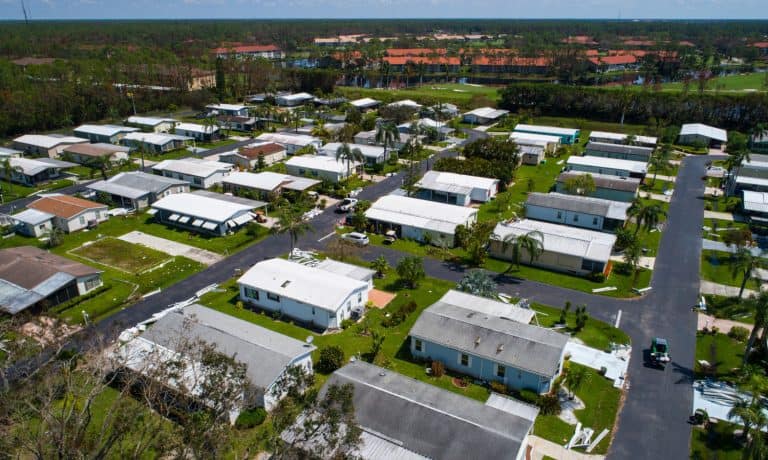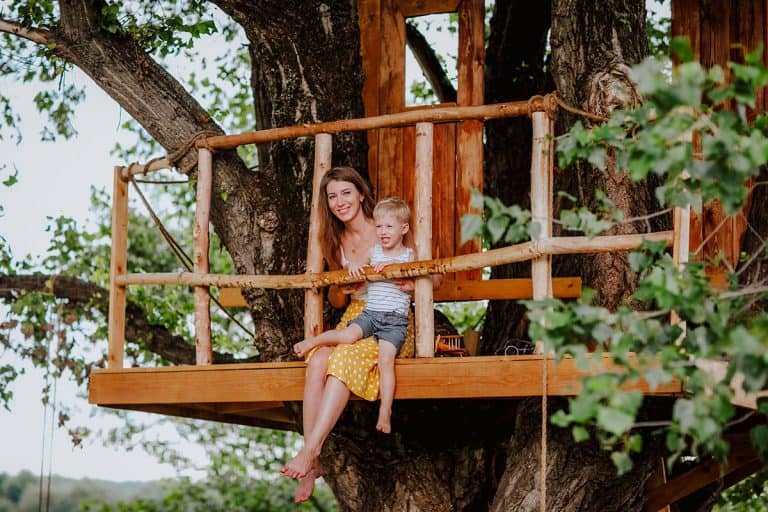How Much Does a Tiny Home Weigh? The Jaw-Dropping Truth I Learned Hauling My Dream Off-Grid

The Surprising Truth About Tiny Home Weight
When we first look at a tiny house, it’s easy to imagine it weighs next to nothing. But load it up with all the comforts we crave—then take it for a spin down the road—and the real numbers can raise some eyebrows. There’s more hiding in those walls and under that roof than most folks realize, and getting this right is a lot more important than we think.
What Determines How Much a Tiny Home Weighs
Let’s be honest—most of us guess at what our little house weighs until it’s time to hitch it to a truck. That’s when reality hits, and sometimes it’s a doozy.
The frame alone, especially if it’s made of steel, can clock in between 1,000 and 3,000 pounds before we even build a wall or pick out a couch. The complete tiny home, once finished, usually tips the scale somewhere between 3,000 and 15,000 pounds, although I’ve seen some get up to 30,000 pounds.
What makes up all that weight? It’s honestly a patchwork. Here’s how it usually breaks down:
| Part of Tiny House | Weight Range |
|---|---|
| Trailer/frame | 1,000–3,000 lbs |
| Walls/Roof/Siding | 1,500–5,000 lbs |
| Insulation | 200–800 lbs |
| Windows & Doors | 200–600 lbs |
| Interior (kitchen, bath, etc.) | 1,000–4,000 lbs |
| Furniture & Stuff | 300–2,000 lbs |
I’ll be straight with you—we can save weight with clever design, lighter materials, and fewer built-ins, but things add up fast. I once tried to “go light” and discovered even the most basic tile job can turn a streamlined dream into a lumbering beast.
Why Your Tiny Home’s Weight Matters More Than You Think
When we don’t know our home’s true weight, we’re rolling the dice every time we hit the road. We’ve all heard the stories. Tires blown on the highway, trailer frames bent, or even worse—being told at a weigh station we’re way over legal limits. It’s not just about the law; it’s our safety and whether we can even get this thing to the spot we want.
Weight matters for a lot more than towing, though. The heavier we build, the bigger the tow vehicle we’ll need, and those rigs aren’t cheap. Fuel bills go up. Stress on the brakes and tires is no joke. Plus, some campsites or country roads just aren’t designed to handle tiny homes at the high end of the weight scale.
Here’s the “wish I knew sooner” moment: every pound we can cut means more places we can go and more freedom down the road. That doesn’t always mean giving up comfort, but we need to be real about what matters. If we want our home to go the distance—without breaking down or breaking us—knowing and managing that weight is one lesson we don’t want to learn the hard way.
Weighing My Own Tiny Home: Stories From the Road
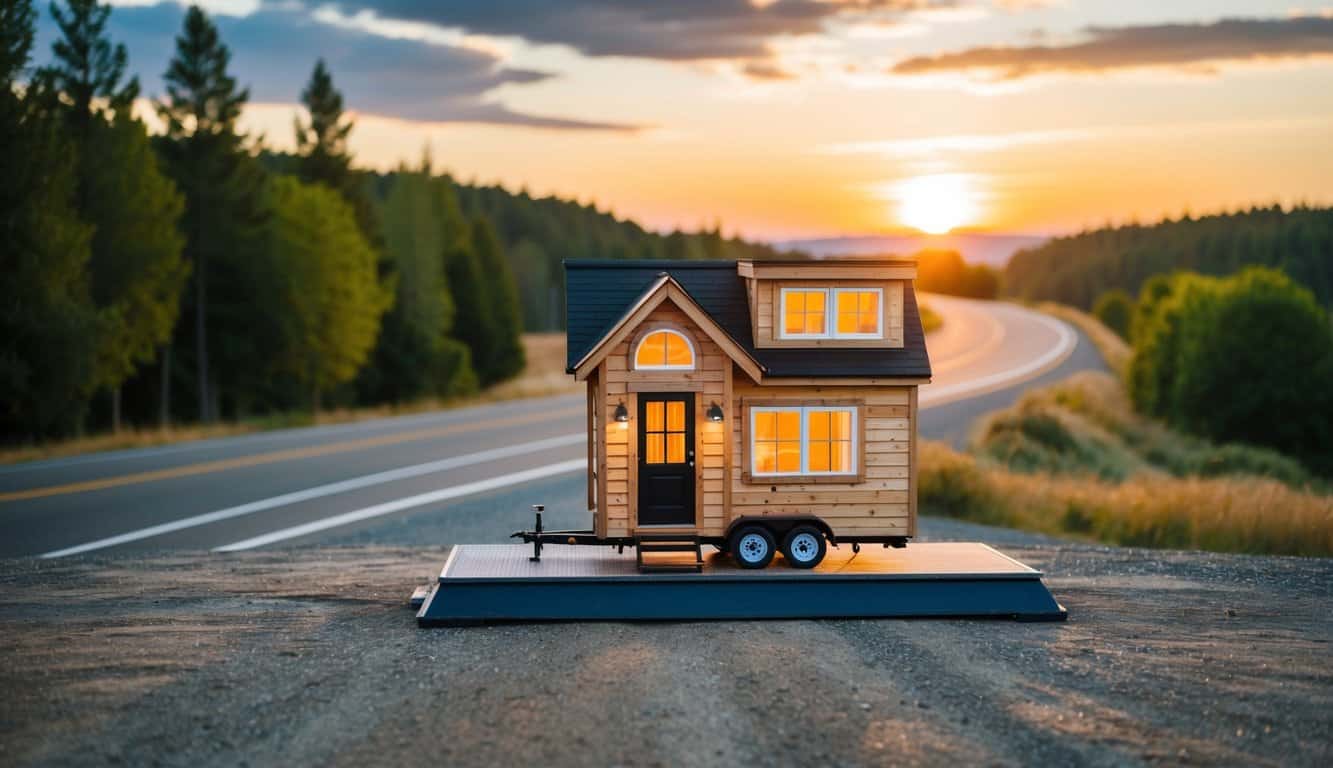
Looking back, the real adventure started the moment we hitched our tiny home to the truck and decided to roll out. Turns out, the real story isn’t just about building the house—it’s about finding out what it really weighs and how far we can push our luck before something gives. Road lessons come fast, and sometimes they’re heavy—literally.
The Day I Hit the Weigh Station (And Panicked)
So, there we were—me, the crew, the dog, and our “life on wheels”—rolling up to a weigh station outside Tulsa. I’ll be honest. My palms were sweaty, and I was praying we hadn’t seriously miscalculated what our house weighed.
The digital display flicked through numbers like a slot machine, finally landing at just north of 13,000 pounds. I’d read online that most tiny homes weigh between 10,000 and 15,000 pounds, but seeing it in bright red LED? Totally different feeling.
The kicker: Our trailer was rated for 14,000 “max”—so we were safe, but barely. Looking back, I wish we’d really weighed individual sections during the build, instead of tossing everything in and hoping for the best.
If you’re reading this before your first run, do yourself a favor. Find a truck stop with a CAT scale, grab a buddy, and get the truth. Trust me—it’s better than guessing.
Lessons Learned From an Overweight Axle
We got lucky that day, but not every trip is smooth. On our second big haul, somewhere in Arkansas, things got sketchy. The trailer started to sag, the tires bulged, and we could smell a little burning rubber.
Turns out, all our “essential” stuff added up fast. Extra tools, backup water tanks, even the kid’s bike—suddenly, the axle was way over its happy place. We had to pull over at a rest stop, toss a bunch of gear into the truck, and limp down the highway, nerves shot and egos bruised.
The lesson? Honestly, weight creeps up in tiny ways. Keep a running list of every heavy item you add. Know your trailer’s true limit—it’s not “just a suggestion.” When in doubt, leave it out or redistribute the load.
Now, every big move, we eyeball the tires, check the tongue weight, and travel lighter than we think we need. Freedom on the road depends on respect for those limits, even if it means giving up a few “just in case” luxuries.
Average Tiny Home Weights: Real Numbers From Real Builds
Ever try to guess the weight of your whole life packed into a single tiny home? I remember sweating bullets on moving day, hoping our trailer axle wouldn’t snap in half—and realizing just how little I knew about what these little houses actually weigh. Turns out, there are big differences depending on our build style and choices.
Tiny Homes on Wheels: Typical Weight Ranges
Let’s talk wheels. Most of us start here because we want to keep moving, chasing that next view or job—or, honestly, trying to outrun the in-laws. The weight can sneak up fast. Our first place—barely 20 feet long—tipped in at about 10,000 pounds, fully loaded.
From what I’ve seen (and weirdly, carried in my truck bed), most tiny homes on wheels weigh between 10,000 and 20,000 pounds. Builders always think they’ll stay lean, but every extra window, fridge, or fancy loft means more poundage. According to A+ Construction & Remodeling, most completed homes, with all our stuff inside, land right in that ballpark: check out their breakdown on tiny home weights.
A word to the wise—if your home’s more than 24 feet, you’ll likely push past 13,000 pounds. I met one couple whose 32-foot behemoth was over 19,000 pounds—with just two people and a dog. So, if you’ve got dreams of off-grid hauling, double-check your trailer rating. A blown tire on a remote mountain road isn’t my idea of freedom.
Stationary Tiny Houses: Foundation vs. Trailer
Now, if we’re dropping anchor and planting roots, the game shifts. I’ll never forget pouring foundation blocks for our stationary cabin—heavy work, but wow, what a relief not worrying about axles. Stationary tiny houses, especially those built on solid foundations, tend to weigh a lot more.
Why? We aren’t limited by what a trailer can handle—so we pile on real tile, brick, maybe even a wood stove. Our current on-foundation place clocks close to 28,000 pounds for just 400 square feet. That’s probably double what it’d weigh if it was built light enough to move.
Foundation builds can use concrete, block, or piers—each one adding its own heft. Meanwhile, even stationary homes on trailers tend to stay much lighter, hovering around the 12,000-20,000 pound mark, just to keep their options open. If you dream of parking your home but want the option to move someday, remember: every extra pound is another chain holding us down.
Tiny Home Weight by Square Foot
Here’s the question nobody tells you to ask upfront: how much does a tiny home weigh per square foot? By my reckoning (and a lot of shoveling gravel and cursing at broken floor jacks), the typical figure sits at about 50 to 75 pounds per square foot. So, if we’re looking at a 200 square foot cabin, expect a finished weight in the 10,000-15,000 pound range.
Of course, that’s if we keep our design simple. Add a slate roof, or custom oak cabinets, and things can quickly get heavy. I’ve seen a 24-footer creep past 90 pounds per square foot—that’s when every trip to the hardware store felt like adding a napkin to a sinking ship.
Check out this quick chart for reference:
| Square Feet | Average Weight (lbs) |
|---|---|
| 100 | 5,000 – 7,500 |
| 200 | 10,000 – 15,000 |
| 400 | 20,000 – 28,000 |
So, before we fall in love with that extra nook or full-size clawfoot tub, let’s make sure we’re not building a house we can’t ever move or even level by hand. Sometimes, freedom means knowing less is actually more.
How Tiny Home Design Impacts Weight
I’ll never forget the day we tried pulling our first homemade tiny house up a mountain pass—engine screaming, wheels creaking, and me sweating bullets the whole way. That’s when it hit me: the design choices we make aren’t just about style—they’re about every pound we drag behind the truck. The little things add up. Sometimes the features we love end up weighing us down, literally.
Materials Make a Huge Difference
We learn fast that building materials can make or break the scale—sometimes in ways that surprise us. Let’s say we go with steel siding because it looks cool and shrugs off hail. Suddenly, our tiny house weighs way more than if we’d picked cedar or vinyl. The same goes for flooring—tile is heavy compared to simple plywood or laminate.
Insulation’s another one. Dense spray foam packs on pounds, but lighter options like fiberglass or sheep’s wool help keep our load manageable without sacrificing warmth. Even our window choices matter. Standard double-pane glass is heavy, but acrylic alternatives can drop the weight.
And don’t forget what’s inside. A compact build tricked out with granite counters, full-size appliances, or a cast-iron woodstove is easily double the weight of a no-frills setup. If we want to stay nimble and safe on the road, we have to get real about needs vs. wants. If you want more details on average weights for different builds, check out this detailed breakdown from A+ Construction & Remodeling on how tiny home materials impact weight.
Quick list of light vs. heavy material swaps:
- Steel roof vs. asphalt shingles
- Hardwood floors vs. vinyl planks
- Granite countertop vs. butcher block
- Full-size fridge vs. compact 12V unit
Roof Shapes, Lofts, and Surprising Add-Ons
Our design dreams often start on paper. Then reality sets in. Switch from a flat roof to a classic gable or gambrel for that farmhouse charm? We just added dozens of pounds in extra lumber and roofing. Got kids (or too much gear)? Building in a sleeping loft with a big staircase means even more wood, more supports, and more headaches if we ever need to tow.
What about add-ons like decks, window boxes, or even an awning over the door? Each “just a little extra” feature adds pounds—and not always where our trailer can safely carry them. When we built our first deck, I was so proud…until I realized it made the whole rig tail-heavy and sketchy to tow.
Lofts feel like a no-brainer for space, but don’t forget the access. Fixed stairs are way heavier than a ladder. And hey, those cool skylights or solar panels? Great for sunlight and power, tougher on the bathroom scale.
We’ve learned the hard way: every little detail changes the balance. It’s worth sketching out weight estimates and using tools like this tiny home weight calculator before you cut that first board or buy that cute mini woodstove. Our backs—and our brakes—will thank us.
Can Your Vehicle Handle It? Towing and Transport Tips
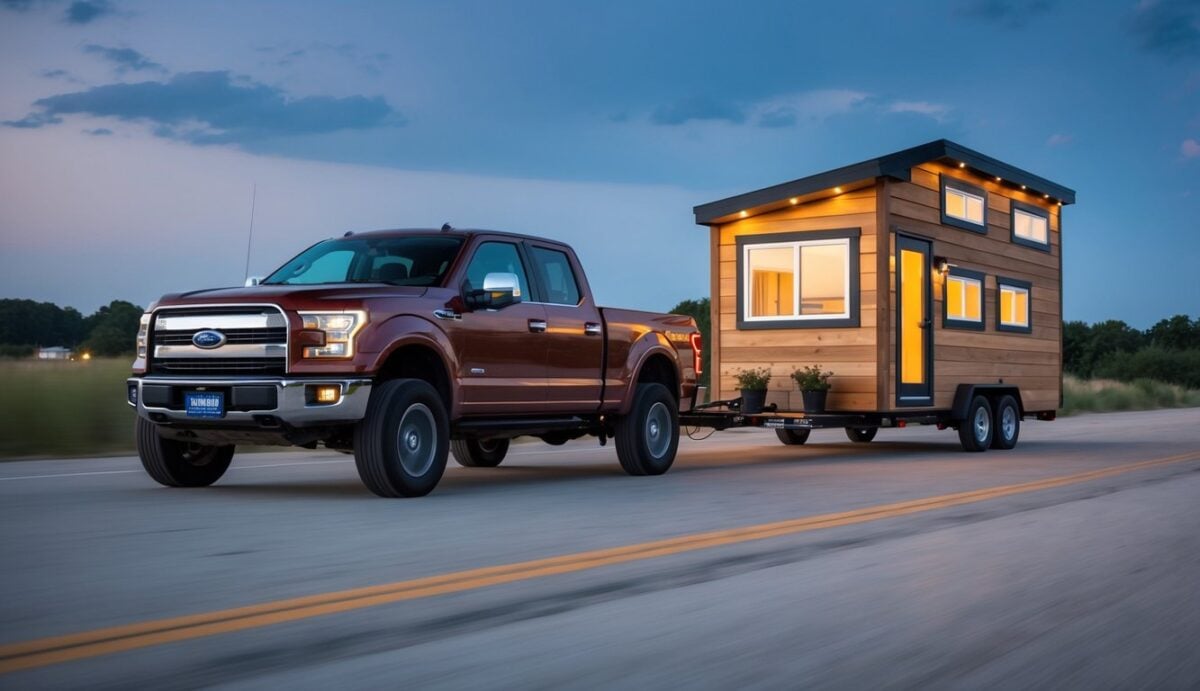
I still remember the first time we hitched the house up and watched our life roll down the driveway—nerves jangling, hands a little clammy. It’s one thing to dream about freedom on wheels. It’s another to trust that a few tons of wood, steel, and dreams will make it to your new patch of paradise in one piece.
Weight sneaks up on us, especially when we’re packing small spaces with big plans. Overlooking even a few hundred pounds can put us—and everyone else on the road—in danger. Let’s get real about what it takes to safely tow our little kingdoms.
Choosing the Right Tow Vehicle
We’ve all seen those photos: a tiny home towering over a little SUV, grinning owners posing proudly. Truth is, not every vehicle is built for this job. Towing a tiny house—and stopping it—needs muscle.
It comes down to towing capacity. Most half-ton trucks can pull between 5,000 and 8,000 pounds, which is enough for some 16 to 20-foot homes if we pack light and plan smart. Once we cross that 10,000-pound line, it’s time to look at a beefier ride—think three-quarter or one-ton pickups.
The catch? Tiny homes are heavier than we expect. An 18 to 22-footer can creep up to 7,000–11,000 pounds just with regular building materials. We can’t rely on guesses. Read the owner’s manual, check the Gross Vehicle Weight Rating (GVWR) and, when in doubt, scale it at a truck stop. Want more specifics? Check out the details on matching tow vehicle strength with house weight.

Common Towing Mistakes I’ve Made (So You Don’t Have To)
I wish I could say our first journey was smooth. Instead, we learned the hard way—by making just about every mistake in the book. Like forgetting to balance the load so the house swayed like a boat when trucks passed. Or pushing our tow rig past its comfort zone, praying the brakes held on steep grades.
Here’s what’s bitten us (and what to avoid):
- Neglecting regular brake checks. Heavy homes need top-shape trailer brakes. Ours failed once, and it was terrifying.
- Overpacking. We stuffed every nook, convinced we “needed it,” then found out the hard limits of max cargo weight.
- Ignoring tongue weight. Too much weight up front or in the back makes for a white-knuckle drive.
- Skipping safety chains and quality hitches. Don’t cheap out here—our friend’s hitch snapped on a pothole, nearly losing everything.
Check your connections twice. Park and walk away before you drive off, then eyeball it with a fresh mind. Trust us—slowing down and doing a walkaround can save your house, savings, and sanity. Want the nitty-gritty on truck choices? This simple vehicle towing guide is damn useful when you’re in the planning phase.
Legal Limits and Safety Warnings You Can’t Ignore
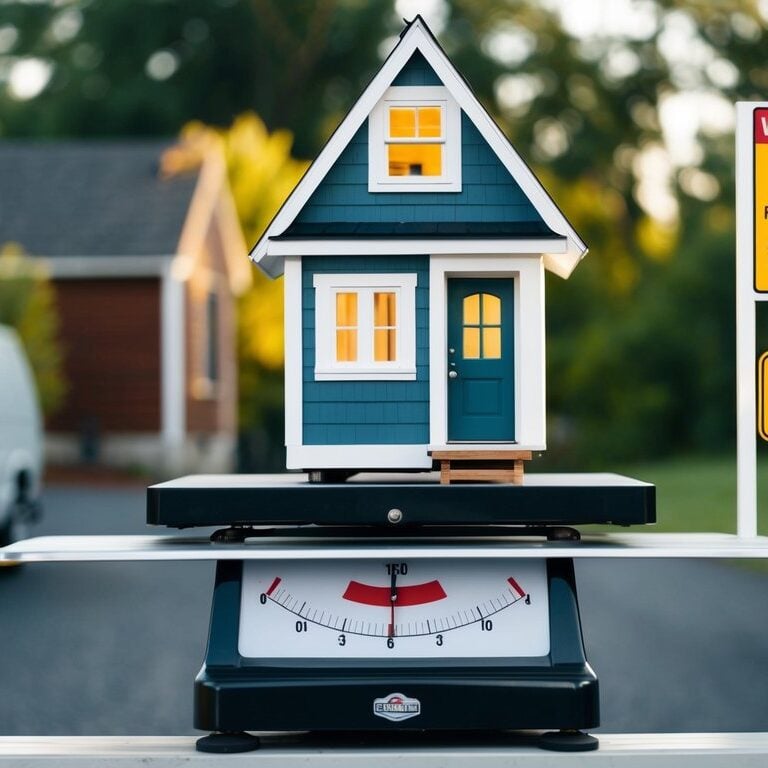
Pulling our tiny house down the highway isn’t exactly a casual Sunday cruise. If we get the weight or paperwork wrong, it can mean wrecked axles, hefty fines, or even losing our home-on-wheels. Let’s talk about where the rubber really meets the road.
Maximum Road Weight Limits
Ever white-knuckled it down a backroad, praying the bridge holds and your trailer doesn’t sway? Been there. Most of us don’t think about legal weight limits until we see those DOT officers out with their scales—or until the “check engine” light is blinking and the tires smell like burnt toast.
In the U.S., most states say the max weight (called GVWR—Gross Vehicle Weight Rating) for a tiny house on wheels is 10,000 to 20,000 pounds with truck and trailer combined. Cross that line, and not only are we tempting fate with our axle bearings, but we also risk tickets and impounding.
Highways and bridges often have strict posted limits. The average 20-foot tiny house usually weighs between 4,000 and 7,000 pounds, while a 30-footer can push 8,000 to 15,000 pounds (check out this breakdown). Before hitching up, it pays—literally—to know our numbers and stay on the legal side of the scales.
Insurance, Permits, and What Happens If You Blow It
I’ll admit it: the first time I tried to insure my tiny home, the agent sounded almost as lost as I was. If we’re honest, insurance for homes on wheels is a headache. Most standard policies won’t cover a full-time tiny house that moves. We need RV insurance or a specialty plan—and honestly, expect some questioning looks or forms to fill out.
Permits are the next hurdle. In many states, hauling anything above 8.5 feet wide means we need an “oversize load” permit. Skip the permit—especially if we’re pushing weight or size limits—and we might get slapped with a big fine, or worse, be forced to unload on the shoulder of I-95 (ask me how I know).
If we blow the legal limits, we risk more than a slap on the wrist. We can face fines, towed homes, revoked insurance if there’s an accident, and a whole heap of red tape trying to get everything back. Play by the rules. It’s not just about safety—it’s about keeping our hard-earned freedom from hauling off into the sunset without us.
Cutting Down Weight Without Sacrificing Comfort
We all want that sweet spot—a tiny home that feels right, not cramped or stripped-down, but also isn’t pulling our truck’s bumper off at every hill. Turns out, it’s not about living with nothing. It’s about making smart swaps and losing the stuff we don’t need.
Downsizing and Ditching the Nonessentials
I remember the first time we walked through our storage unit, box in hand, asking, “Have we touched this in the last year?” Suddenly, most of our stuff lost its magic. That’s the gut check we all need if we want our tiny home—and our lives—to feel lighter.
Here’s what worked for us: We made three piles—gotta have it, nice to have, why do we still have this? Everything in that last pile? Out it went.
Don’t just prune back—actually question what makes life comfortable. We kept one cast iron skillet (vs. three). Traded a stack of beach towels for two quick-dry ones. We got real about our hobbies—no more “aspirational” gear gathering dust under the bed.
The best part? Each thing we let go of, our home felt less weighed down. Not just physically, but mentally. When planning a lightweight build, every ounce saved means more freedom to bring what truly matters.
Swapping Heavy Materials for Clever Alternatives
Back when we started out, I thought you needed the sturdiest lumber and real tile to make a tiny home feel, well, like a home. But then our trailer groaned, and my back did too. That’s when we started getting creative with materials.
We swapped out traditional plywood for lightweight composite panels. Switched our heavy wood siding with metal or recycled vinyl. And for the floors, instead of thick tile or stone, we went with luxury vinyl planks—waterproof, warm underfoot, and way easier to haul.
For the kitchen and bathroom, composite or bamboo countertops get the job done at a fraction of the weight. If you’re worried about insulation, rigid foam board or sheep’s wool packs a punch without adding pounds like spray foam can.
It’s not about cutting corners—it’s about using what works. There’s a mountain of weight restrictions for tiny homes on wheels that’ll bite hard if we ignore them. We learned that sometimes, modern materials mean we can have our comfort, keep our style, and still tow our home wherever the road calls.
A Few Pitfalls You Won’t See Coming
If we think building a tiny home is all about cutting weight and keeping things simple, I promise—there’s more sneaking up on us than we expect. It’s easy to focus on lumber and appliances, but the little things add up fast and can throw our plans way off.
Hidden Weight: Stuff That Sneaks Up on You
Ask anyone who’s weighed their loaded-down tiny home and you’ll hear the same thing: it’s the extras that get us.
Consider this—every throw pillow, backpack, frying pan, and potted plant we add goes straight to our total weight. I thought I was being careful, but by move-in day, I realized the “just one more” attitude stacked hundreds of pounds we never planned for.
We often forget about storage bins, toolboxes, and even the books we can’t leave behind. Clothes make a bigger difference than we think. Water tanks and propane look light until we fill them up. And those big windows?
The glass alone weighs more than some framing lumber. I learned to keep a notebook, writing down every item we plan to bring. It helped—sort of. But the lesson: we have to treat every single pound like it matters, or we’ll pay for it at weigh-in.
Bottom line? Before we hitch up, we should load everything—including gear, groceries, and whatever we insist on calling “essentials.” Then go get that real-world weight at a public scale, so surprises don’t show up halfway to our new life. I found these details are key in keeping us under the limit, like the notes on average tiny house weight.
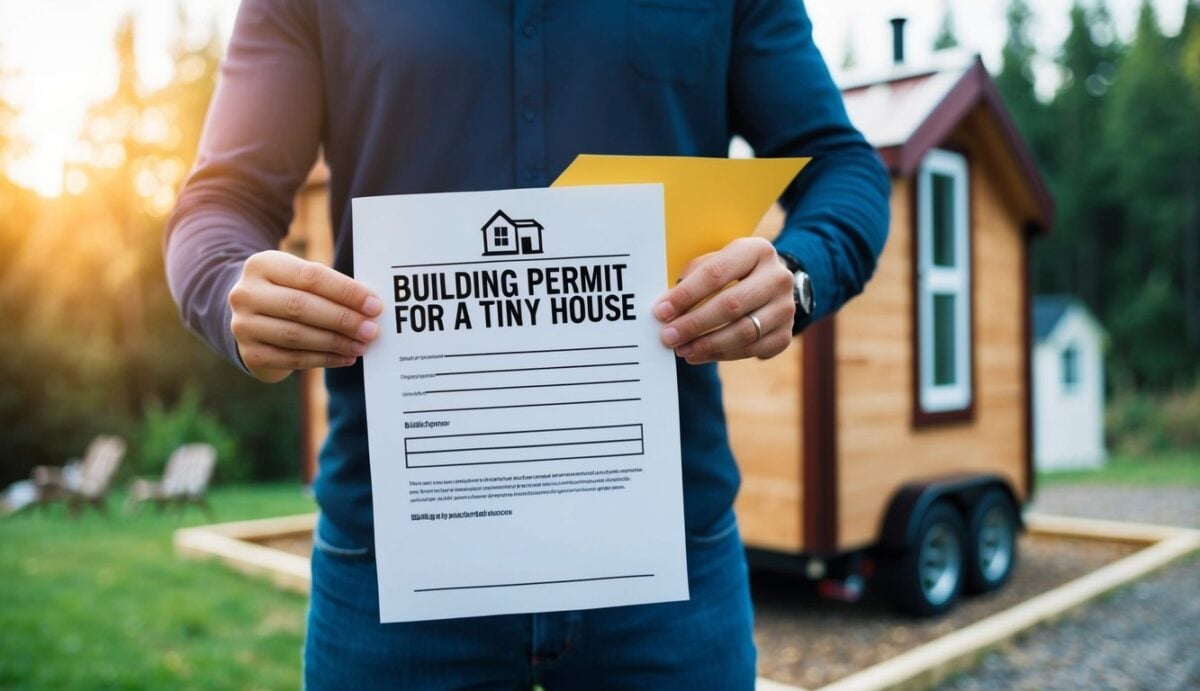
One Regret I Still Carry About My Build
I’ll be honest with you—if I could turn back time, I’d spend way more energy on my trailer weight limits than I did. When we first started building, I let excitement win out over good planning.
I added a bigger fridge, extra storage, heck, even splurged on tongue-and-groove cedar for the ceiling because it looked sharp. The trailer held up okay. But on our first highway haul, white knuckles and nervous glances at every bump reminded us: we’d pushed things way too close.
Every time a friend asks about pitfalls, I tell them this: living light doesn’t just make the build easier—it gives us peace of mind. We can’t easily fix a trailer that’s too loaded down, and getting turned away at weigh stations or dealing with busted axles is a nightmare I wouldn’t wish on anyone.
If there’s one thing I’d do differently, it would be tracking everything we put in our home as we built it and leaving a bigger weight buffer than I thought we’d need. Trust me: chasing freedom isn’t worth risking it all over an overloaded trailer. This is one lesson I still feel in my gut every time we hit the road.
Charting Your Next Move: So, How Much Does a Tiny Home Weigh for You?
Ever tried guessing the weight of your life’s dreams? I remember staring at our first tiny house and thinking, “Is this thing gonna snap the axle on the first turn out of the driveway?” Turns out, weight really does matter—especially if we want to take our home on the road and not just watch it flop like a beached whale.
Here’s the real talk: most tiny homes on wheels tip the scale between 6,000 and 10,000 pounds. Some go heavier—like ours, once we loaded it with bikes, tools, books, and a few too many jars of pickles. Larger homes (with all the bells and whistles) can easily push past 10,000 pounds.
Sometimes, I wish someone handed us a cheat sheet back then. Something simple, like:
| Tiny House Length (ft) | Rough Weight (lbs) |
|---|---|
| 16 | 8,000 |
| 20 | 10,000 |
| 24 | 12,000 |
| 28 | 14,000 |
Give or take a few bins of canning supplies—and yeah, the weight of that old cast iron skillet you “swear you’ll use daily.”
What really got us in trouble? Forgetting to add up the weight of all the extras. Built-in couches, solar panels, Susan’s “essential” plant shelf. It sneaks up. Before you know it, we’re eyeing the trailer’s max limit and debating whether the dog needs his own bunk (he does).
If you’re just starting out, I suggest doing a ruthless inventory. Make a list; weigh what you can. Don’t trust your instincts—trust the numbers. And remember, we all underestimate at first (trust me, your future suspension will thank you).
Curious if your truck can haul it? Check specs. Better to be the person creeping up the highway than the one waving goodbye to their siding in the rearview. Real freedom isn’t just about going anywhere—it’s about knowing we’re ready when we do.
Frequently Asked Questions
We’ve all wondered what’s gonna weigh us down on the road to freedom. Numbers matter—especially when it’s your home, your dreams, and maybe your old guitar riding shotgun. Here’s what happens when you stack up square footage, material choices, and everything you own onto four wheels.
What’s the ballpark weight of a fully outfitted 20-foot tiny abode?
I remember when we took our 20-footer cross-country. With solid walls, roof, insulation, plumbing, kitchen gear, clothes, and whatever we stashed in the cupboards, that little home tipped the scale right around 10,000 to 12,000 pounds.
Load up smart—skip the stuff you don’t need, but count on most 20-foot tiny houses weighing about 10,000-15,000 pounds once you’ve got everything inside.
Do larger tiny houses, like a 30-footer, tip the scale much heavier?
When we helped our buddies move their 30-foot palace on wheels, we watched that number climb—way past 14,000 pounds. Every foot adds lumber, roofing, and all the cozy extras we try to squeeze in. If you’re dreaming big, remember bigger always means heavier, and sometimes way more than you’d expect.
On my quest for a mobile lifestyle, how’s the heft of a 16-footer gonna affect my journey?
A 16-foot tiny gets you freedom but keeps things a bit lighter. Most of these homes land in the 6,000 to 8,000-pound range—sometimes less if you go super simple. We learned the hard way that less weight usually means more tow vehicle choices, less stress on tires, and better fuel economy… which really matters at mile 800.
Could you shed some light on the weight factor of a wooden tiny home, partner?
Wooden homes just feel right. But let’s not kid ourselves—they’re weighty. Wood framing, sturdy floors, and wood siding pile on pounds faster than metal or composite. On our first build, all wood inside and out, we easily added 2,000 pounds compared to lightweight alternatives. Strong? Heck yes. But every board counts when you’re hitting the highway.
If I’m hankering to haul a 16×40 shed, what kind of weight am I wrangling with?
Those big storage sheds? That’s a whole other ballgame. A typical 16×40 wooden shed can weigh between 10,000 and 15,000 pounds—sometimes even more if it’s got thick wood and loads of extras. Don’t trust your eye—get that thing weighed before you hitch up, or you’ll end up with a scary surprise at your first weigh station.
What exactly tips the scale when calculating the weight of my freedom retreat on wheels?
We didn’t realize how fast little things add up. Flooring, tile, heavy appliances, full water tanks, solar gear, tools, even the books we thought we couldn’t live without—each one nudged us closer to our weight limit. If you want to dive into the details, check out what folks are sharing and how much tiny homes weigh.
Our best lesson? List every single item, from hardware to houseplants, and add it all up. Overlook nothing—the road won’t forgive what the scale can’t handle.




